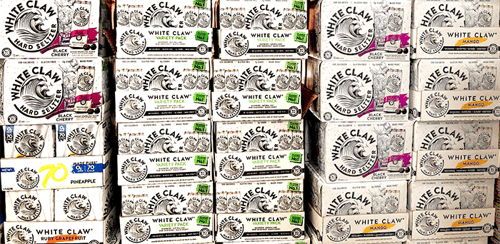Companies have a vital need for research when they’re weathering changing landscapes. But, at those moments, it can be hard to find the right answers in existing studies.
Custom research can solve this problem if you have money and time to burn. But time is a limited commodity, now more than ever — and an equalizer for even the bigger brands.
Proxy audiences represent a strategic workaround, if your research platform is flexible enough to support them. Often underutilized, they provide a more affordable alternative to custom research in a fraction of the time.
Here’s what you need to know about the power of proxy audiences:
The challenge of new, niche, and growth audiences
At Helixa, we define a proxy audience as a stand-in for an unavailable audience, which is created from various combinations of demographics, psychographics, interests, influencers, and consumption data.
Here are a few examples where you might need one:
-
- You’re offering a new solution and need to understand your potential audience
- You need to understand a niche or local audience
- You’re at an established company and need to explore specific growth opportunities
Each of these examples would benefit from a proxy audience, but the approaches can vary significantly, depending on the situation at hand.
How we think about proxy audiences
After building hundreds of these audiences during my time at Helixa, I would group them into the three categories mentioned above: new, niche, and growth opportunities.
/Helixa-Proxy%20target%20audience.png?width=600&name=Helixa-Proxy%20target%20audience.png)
For brands building new audiences, the best approach is to create a target around the key lifestyles and demographics that you want your brand to reach. By thinking about it this way, you can discover your best potential customers and reach them more effectively.
In the case of a niche or hyper-specific group, I would recommend building an audience of products or publications frequented by the group in question. This allows you to get away from any single brand and explore the audience’s shared attributes.
Established brands looking for potential growth can build an audience based on competitors or others in the market with adjacent offerings. Then, they can make it more targeted by adding defining demographic and psychographic characteristics from the existing brand audience. This helps to isolate potential customers in the larger market for more accurate insights.
Ultimately, though, the recommendation must be tailored to each situation, which is the beauty of a tool like Helixa (in my biased opinion): The platform provides you the flexibility to build that proxy against your specific goals.
Most products move through all three of these categories over time at some point. Hard seltzer is a perfect example.

White Claw had to build a new audience when it rolled out a fresh take on alcoholic beverages. Then, a few years later, there were a few brands catering to a niche segment of Millennials and trying to expand their reach. Today, hard seltzer is mainstream — and a big growth opportunity, as major breweries rush to release their own seltzer brand.
Here are some other examples where proxy audiences would come in handy, along with the details of how I would approach them.
Defining lifestyle audiences
If you want to reach members of a group with shared values and lifestyle choices, you’ll want to avoid using just one brand to define your audience. Otherwise, it will be biased by attributes that are unique to the brand in question.
A group of brands would work, but a better solution is to use a collection of top media choices frequented by people who adhere to the lifestyle you’re trying to analyze.
For example, if you used cheese-substitute brands to define a vegan audience, you might end up accidentally pulling in omnivores who buy vegan cheese because of lactose intolerance or food allergies. But the list of publications below should isolate an audience that is vegan and invested enough to follow related content.
/Helixa-Proxy%20audience_vegans.png?width=650&name=Helixa-Proxy%20audience_vegans.png)
You can also take a more direct approach if there are matching statements from MRI-Simmons, through our data fusion. With Total Consumer View, you can build audiences using the psychographic statements from either study (or both!)
Here’s an audience that captures farmers-market foodies.
/Helixa-Proxy%20audience_farmers%20market%20foodies.png?width=624&name=Helixa-Proxy%20audience_farmers%20market%20foodies.png)
The resulting insights from these lifestyle audiences will help you understand the community you’re targeting, so you can speak their language and connect in an authentic way.
Defining B2B audiences
B2B audiences can be tough to define in most research software, but Helixa can isolate many of them with a little creativity. The trick is finding elements that are shared within the B2B niche you’re hoping to target.
It’s common to isolate these audiences using their unique professional organizations and associations.
If you wanted to reach public relations professionals, the audience would look something like this.
/Helixa-Proxy%20audience_PR%20audience.png?width=615&name=Helixa-Proxy%20audience_PR%20audience.png)
Another way to accomplish this is to look at the software that is specific to a target profession. This can also be helpful if you’re selling a low-cost product that hobbyists might want, as well.
Here’s an audience that is interested in music production.
/Helixa-Proxy%20audience_music%20production%20audience.png?width=414&name=Helixa-Proxy%20audience_music%20production%20audience.png)
And of course you knew influencers were going to play a role eventually — you can also build an audience using influential people in the professional niche you’re trying to reach.
Here’s what that might look like for account planners working in advertising.
/Helixa-Proxy%20audience_account%20planning.png?width=585&name=Helixa-Proxy%20audience_account%20planning.png)
It’s worth noting that I only knew one of those influential planners, Mark Pollard. I found the rest by looking at his audience. Sometimes one spot-on choice is enough to discover the rest of the items you need for a strong proxy audience.
Defining launch audiences
The launch of a new venture is a make-or-break moment. By the time you go to market, you want to make sure you have already validated the opportunity and audience through market research.
Sometimes, you can use your competitive set as a proxy, but that becomes more difficult when you’re solving a new problem (or an old problem in a new way).
For example, I recently read about a new personal CRM app that allows you to manage relationships in advanced ways previously reserved for businesses. If I was the first to market with this idea, I would use other personal productivity SaaS companies as a proxy.
/Helixa-Proxy%20audience_productivity%20audience.png?width=389&name=Helixa-Proxy%20audience_productivity%20audience.png)
With a little research, I found some services that are fan favorites among a community of people looking to optimize their productivity and declutter their digital lives. I avoided widely used apps like Dropbox to avoid watering down the resulting insights.
This can also be done on a regional or local level. If you wanted to explore the appetite for the new NHL franchise in Seattle, your first instinct would probably be to run a search for Seattle-based hockey fans.
/Helixa-Proxy%20audience_NHL%20Seattle%20audience.png?width=430&name=Helixa-Proxy%20audience_NHL%20Seattle%20audience.png)
But that doesn’t account for future fans who are ignoring the NHL because they lack a team to cheer for. To isolate that audience, you could take a look at the combined audience of all other Seattle sports fans.
/Helixa-Proxy%20audience_Seattle%20sports%20audience.png?width=399&name=Helixa-Proxy%20audience_Seattle%20sports%20audience.png)
The most valuable insights will come when you compare and contrast those groups.
Build and explore elusive audiences
Now that you have a better understanding of proxy audiences, I would encourage you to try creating your own to better capture the audiences that matter to your business. Considering how difficult it can be to analyze certain groups, I’m sure there’s a few you’ve been waiting to explore further.
Just remember, there are often many solutions for building a given proxy audience. Often, the best proxy audiences I see are made up of several different techniques at once, like the last example for the Seattle Kraken franchise.
So experiment, analyze each option, and choose the one that feels most accurate when examining all the resulting data. However you approach it, proxy audiences are sure to upgrade your insights process.
And, of course, you can always reach out with any questions or projects you are working on.
 Alex is a Senior Research Analyst at Helixa, where he leverages his analytics background to help clients discover and interpret surprising insights. In his free time, he can often be found trying to locate All-Dressed chips or training his phone to stop removing the letter "u" from words.
Alex is a Senior Research Analyst at Helixa, where he leverages his analytics background to help clients discover and interpret surprising insights. In his free time, he can often be found trying to locate All-Dressed chips or training his phone to stop removing the letter "u" from words.




